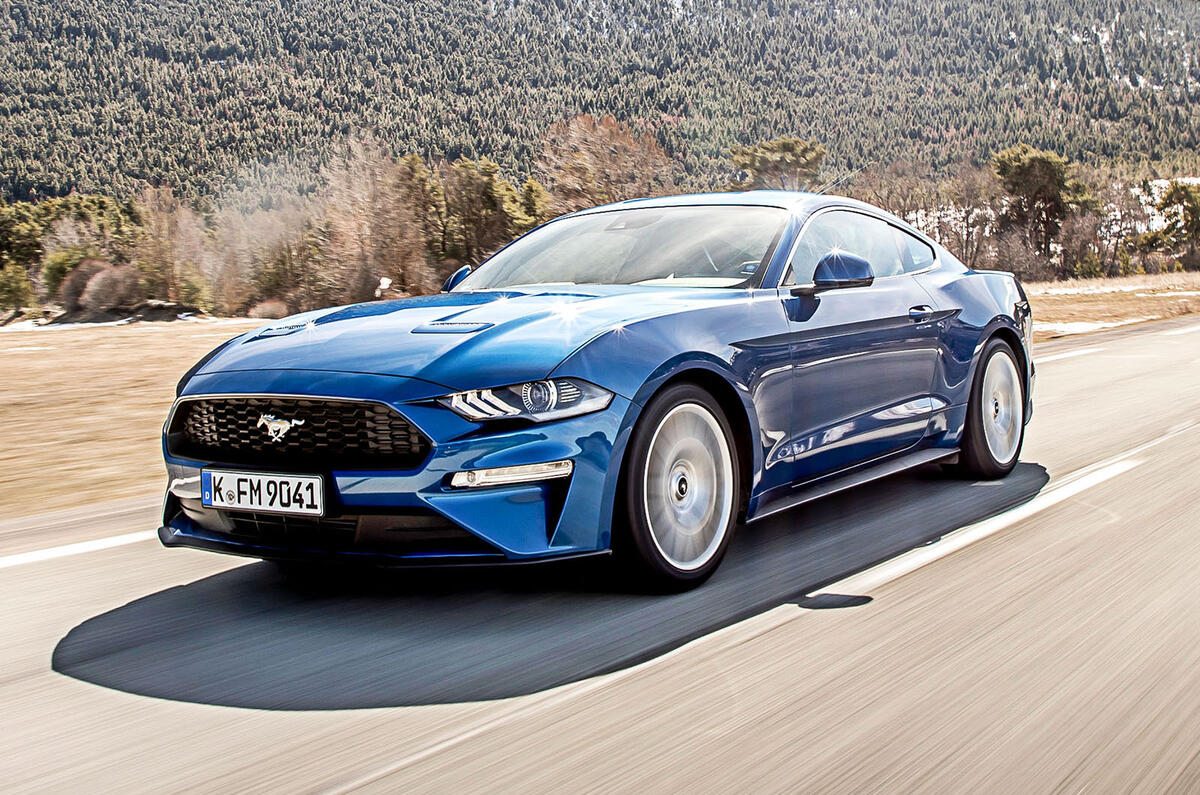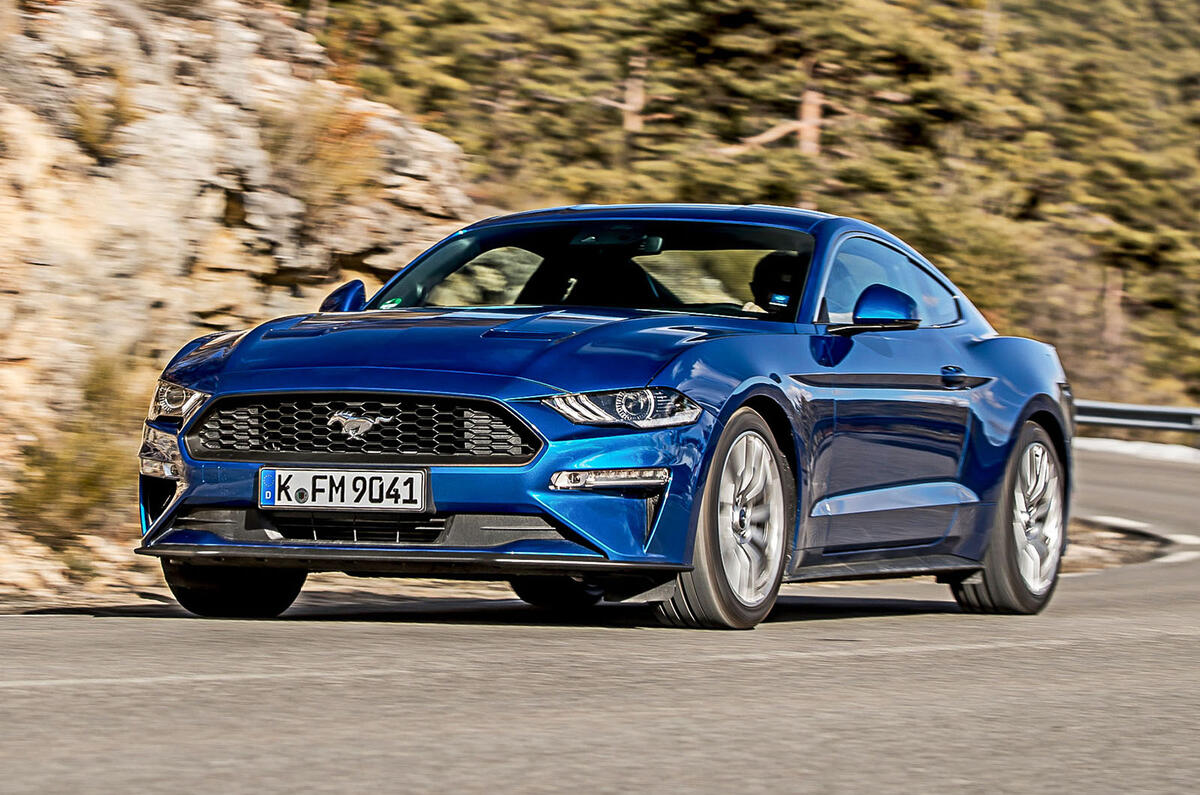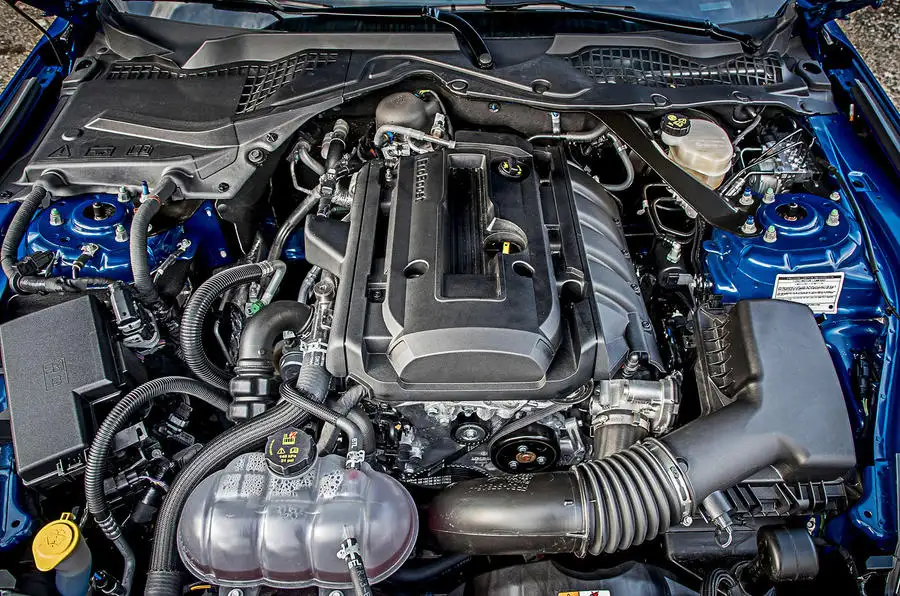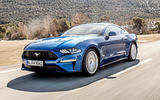What is it?
Put plainly, it’s the low fat, skimmed-milk version of the Ford Mustang; a car that’s as synonymous with V8 engines as Donald Trump is with ridiculous haircuts and Oompa Loompa-inspired fake tans.
However, the key role the V8 plays in forming the Mustang’s identity hasn’t stopped Ford from offering its iconic pony car with a 2.3-litre, four-cylinder Ecoboost engine. It’s the same power plant that was available when the sixth-generation Ford Mustang first came on sale back in 2015, and despite the fact that it’s closely related to the engine found in the ballistic Focus RS, at the time it never really won us over on the charm front.
Now, we’re sampling it in the new 2018 Mustang, paired here with Ford’s new 10-speed automatic gearbox. Along with that newly-available transmission, the facelift brings with it a number of subtle tweaks intended to broaden the ‘Stangs appeal.
There’s a greater focus on safety, with features such as pre-collision assist, pedestrian detection and lane-departure warning all being fitted to help boost the 2015 car’s two-star Euro NCAP safety rating, while a digital instrument cluster adds a more modern twist to the interior.
The chassis has been fettled, too, with revised dampers improving the Mustang’s surefootedness, while the rear suspension has been stiffened up courtesy of a new cross-axis joint. Those willing to part with £1600 can also spec an adaptive MagneRide damping system for the first time.






































Join the debate
Add your comment
Mustang ECO Boost
Not sure how the foul mouth political comment relates to this "CAR" review.
Ford are aware fuel prices in the UK means not every buyer can afford to have a fuel tanker following them when they enjoy the V8 performance.I would suggest the 7MPG difference would be more like 10-15MPG dependant on the foot on the go pedal.I would also say the buyer of a Mustang buys on emotion and under the bonnet reality to your financial situation.
From what I've read
The turbo depreciates faster than the GT in the US but the opposite in the UK.
The V6 is no longer available in any country.
The difference in BHP is due to Euro regulations.
Still think the Mustang is more interesting then the same BMW, M-B and Audi I see everywhere these days.
simon davis/mustang
your opening statement has revealed the magnitude of your journalistic brilliance.take your tree huggers hairshirt with the "i love jeremy"badge off,and try and use whatever objectivity you have left and do your job